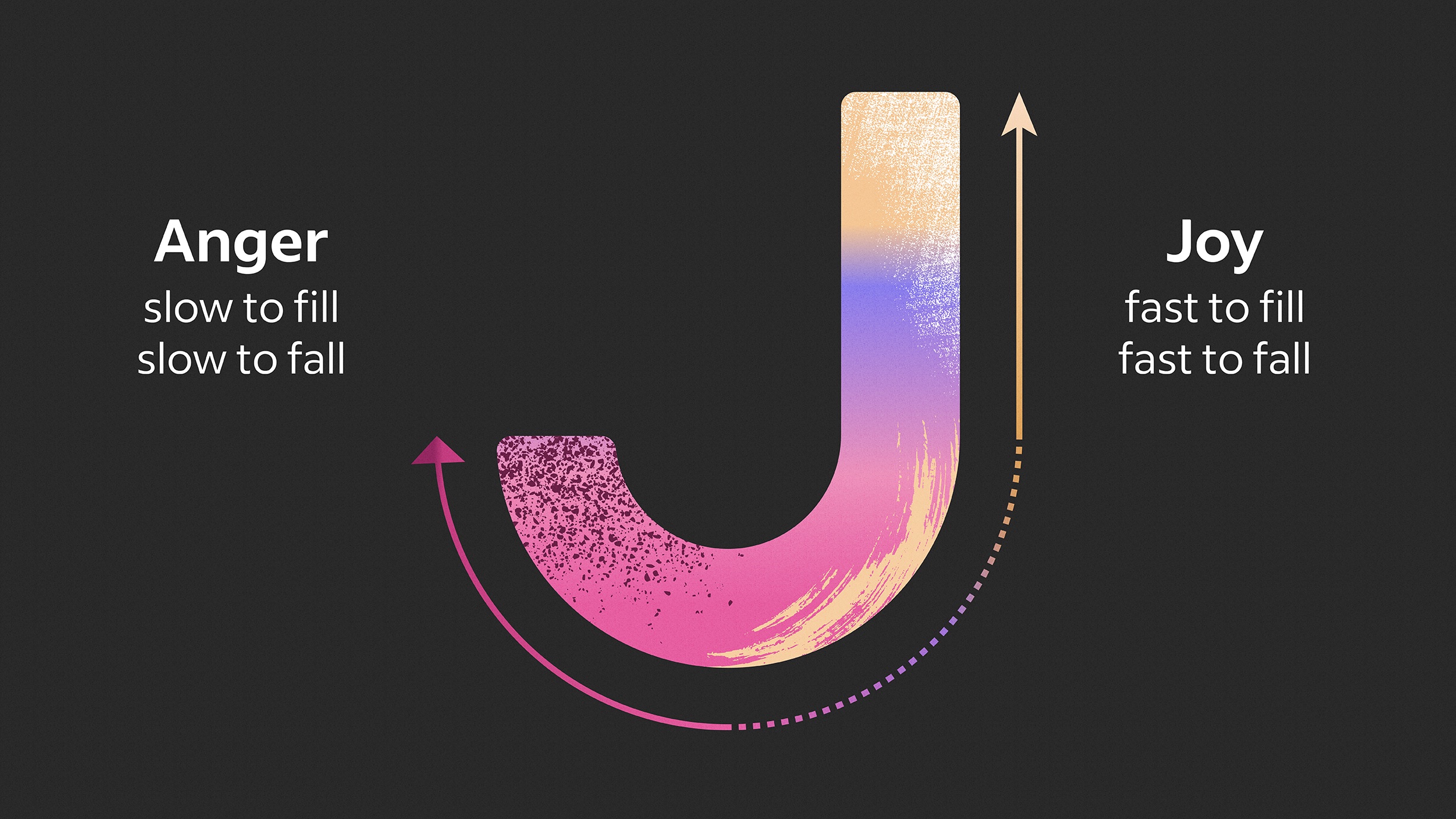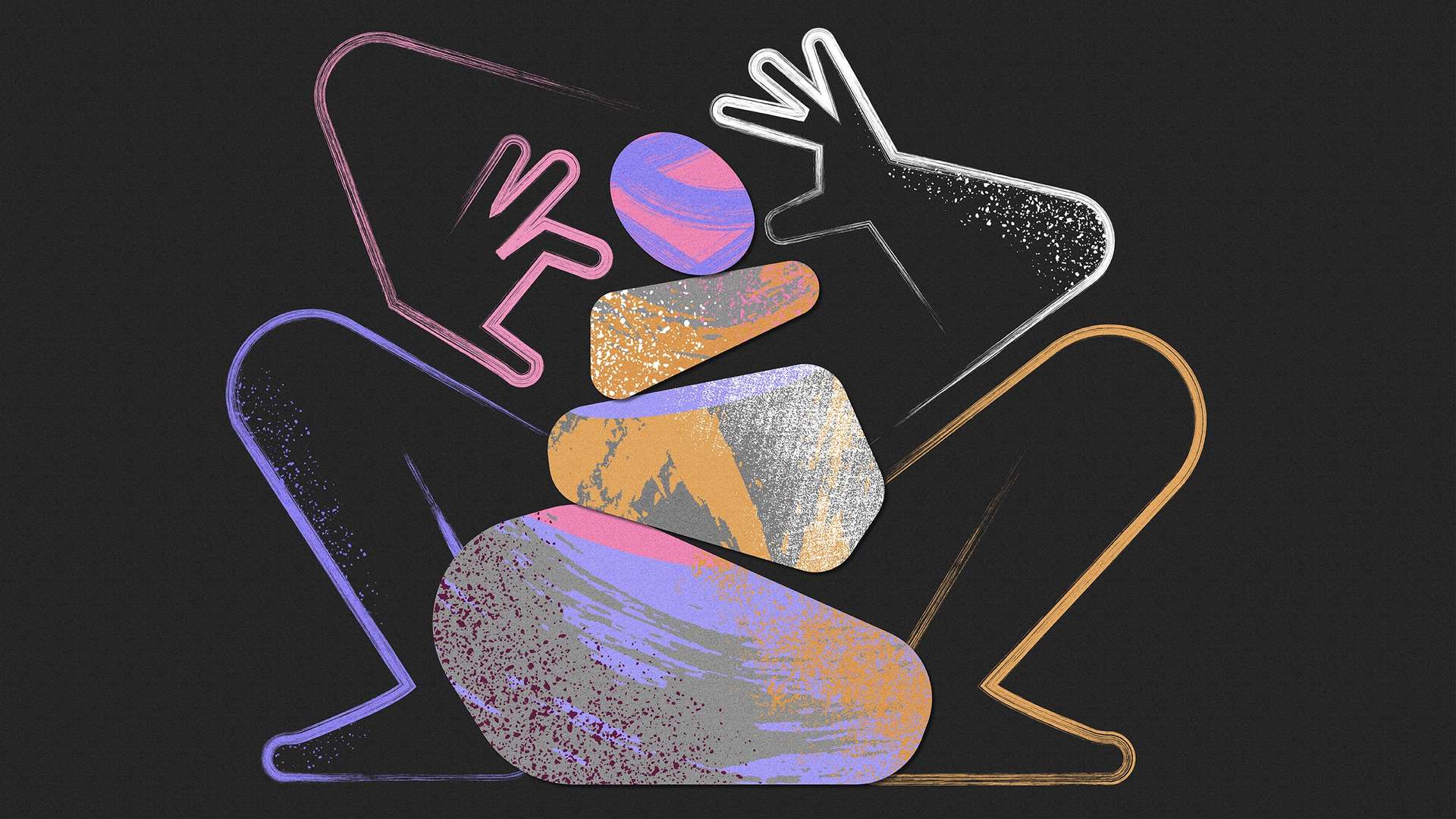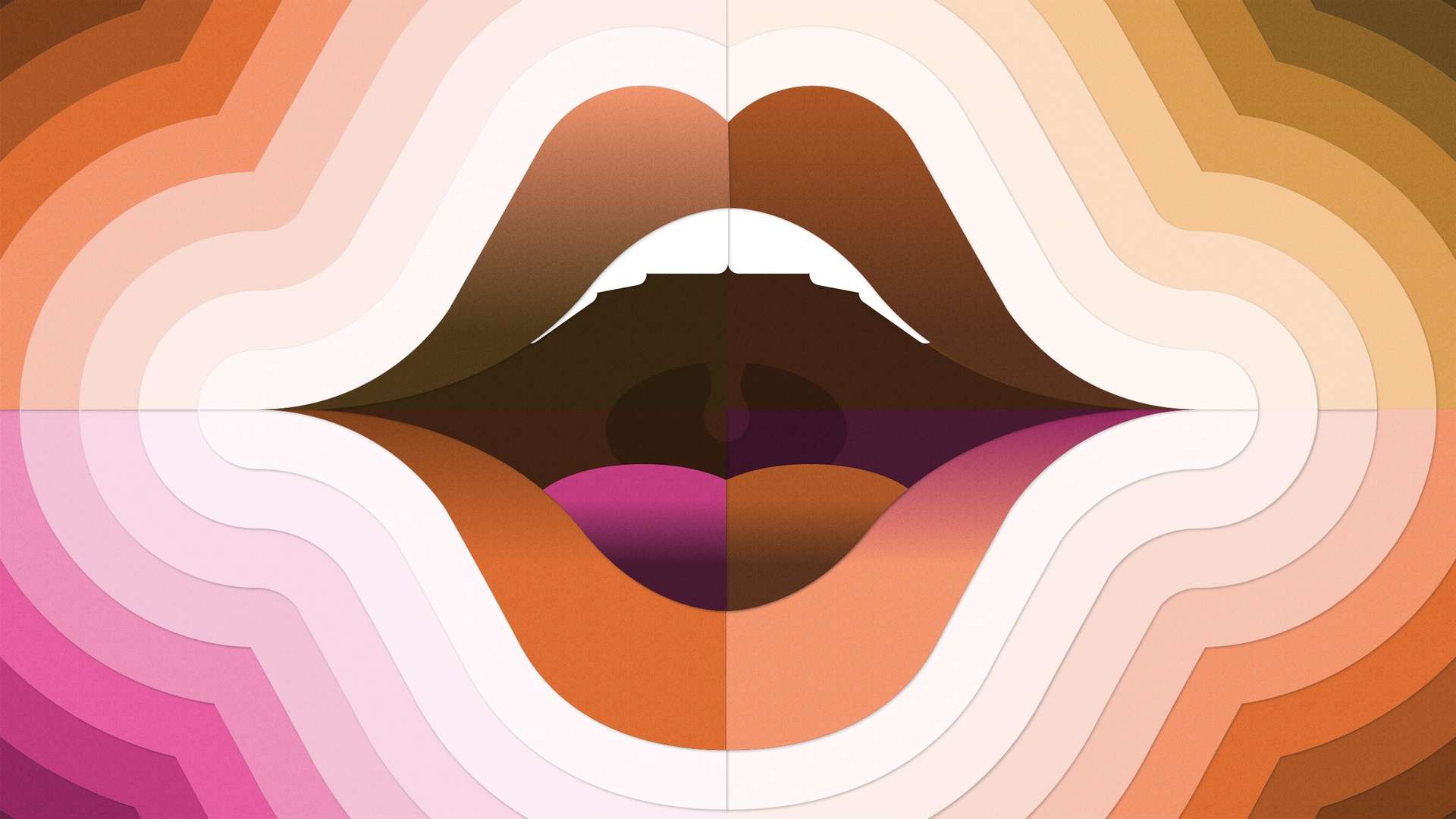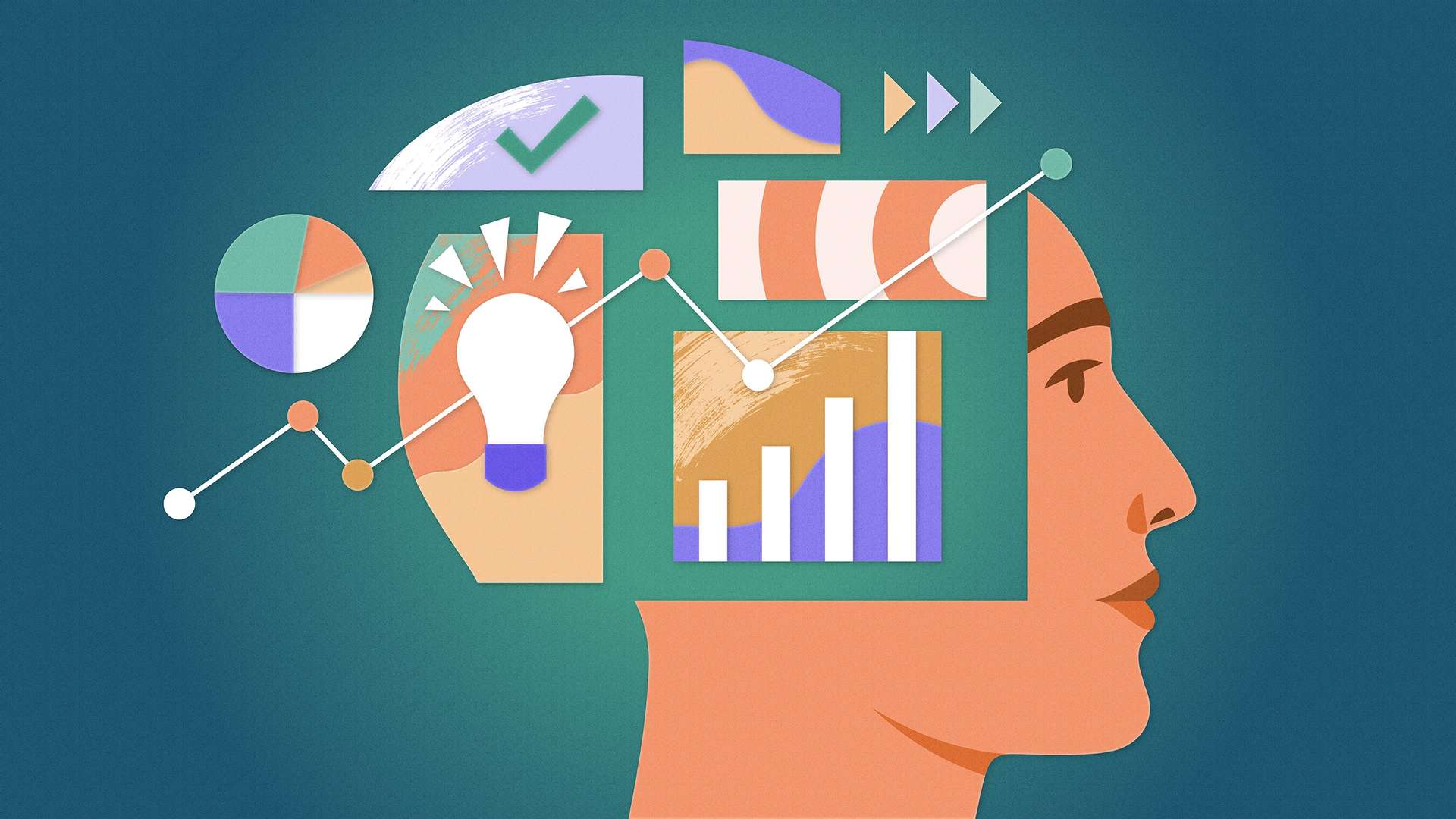Whether we wanted it or not, the last several years forced us to reflect on our lives. As the reality of the pandemic and how I spent my day-to-day life became more obvious, one aspect stood out: an overwhelming feeling of discontent. As creatives, our dissatisfaction is often something we thrive on. It’s where we get that urge to discover new styles, promote innovation, and challenge the status quo of our industry. But what about the creative version of you that’s not at work? You know—the real you.
Like me, you might feel inundated by all the self-help videos, bullet-list books, and dialed-in routines meant to make life at home so much more organized and digestible. I gave them a shot, but I soon discovered that the strongest approach to move forward was to simply focus on what I knew most about myself. While it’s tempting to look for answers to every little thing out there, sometimes we really need to look inward and outfit ourselves with solutions that help us gain control over our daily lives.
That’s where I began, and I found five adjustments that helped me bring joy back into my creative life. I hope they help you, too.
Burning out at work leads to creative burnout at home
At Indeed, I’m a brand designer. I spend most of my day ideating on ways to use our design systems to make every product we offer feel like one cohesive experience. At home, I put my creative energy into photographing local birds and fabrication projects like restoring classic cars.
I love both the personal and professional sides of this coin. But even before the exhaustion brought on by the pandemic, I kept getting burnt by putting almost all of my creative energy into my job. My biggest question always seemed to be, “Why do I feel like I have no time to be creative for myself?” I looked at all the suggested ways to plan breaks in my day, but all they did was box me in. I’d see an opportunity to create between work meetings but the constraint never allowed for real creative freedom. It was like I was forcing a deadline onto something that didn’t need one. It ruined the joy in my personal projects and added to my frustration.
Over time, the discontent I felt in my personal endeavors became a de-motivator. It was now a massive balloon filling up the room. The more it grew, the more stress I felt. Instead of facing it head on, I waited for a creative spark that would cause the balloon to pop. But in the end, it was me who burst. I questioned my legitimacy and skill. My personal projects felt like weights so heavy that I’d never be strong enough to lift them again. I was disappointed in my inability to handle the load or even find a path forward.
I wanted to turn my anger into a design project. To figure out how I could structure my life in ways that could help me avoid burnout in the future.
It’s difficult to come back from that kind of burnout. But I’m on the road to figuring out how I can sustain my professional creativity without sacrificing my personal projects. I’m not a mental health professional, but here’s what I learned about myself on the road to staying creative every day.
Finding opportunities for relief from burnout
Our breakdowns deserve a breakdown. When we hit roadblocks, we need to analyze them. I started by creating a really simple chart. On one side was joy and on the other was anger, showing measurements of capacity. The goal here was to answer a new question: “How can we maintain creative momentum without boiling over?”

Measuring emotional capacity is unique to everyone, but I’d wager we’re not all that different. For starters, we have an incredible amount of room for joy. It’s what we want more than any other emotion. Imagine your perfect day. Is it filled with continual, joyous moments of contentment? We love the rush of positive experiences, though the feeling of those moments can also disappear rather quickly. It drives us to pursue those moments more often and look for them as a way to validate our choices.
The flip side to that is our anger. We don’t have a lot of room to hold anger, so we tend to boil over and get frustrated after just a few bad incidents (fans of Pixar’s “Inside Out” can picture this). While slower to reach capacity, anger can also take quite a long time to truly simmer down. Once I’m mad, I have a hard time finding my way back to joy. The longer that takes, the more likely I am to start believing there’s never time for joy.
I didn’t make this chart to show that we need joy all the time or that we need to avoid challenges. Instead, I used this chart to dig deeper into what created my most debilitating frustrations. As you look at it, ask yourself: What are my core anger triggers? If I knew what they were, how would I structure my daily life to avoid them?
Turning your anger into a design project
For me, the five items in the next image represent the challenges of a discontented creative mind. These categories are purposefully broad because this isn’t a science project. Instead, it’s a creative one where you can fill in the details for your own life. Maybe you want to work on one area at a time, but it could be all of them (it was for me).
I wanted to turn my anger into a design project. To figure out how I could structure my life in ways that could help me avoid burnout in the future. But also to give me room for reconciliation. You can do this, too. In this project, you’re both the user and the designer. The designer in you needs to identify which problems are causing broken experiences for the user in you—then find adjustments to help you reach your goal.

Adjustment 1: Establish moments of control
Work and family demands are huge, right? It’s hard to imagine a world without them. Creatives are hungry for focus. Passion projects are what we strive for, but when we’re loaded with demands and no time to focus, we get disheartened and lose interest. Just as quickly as we become excited to pursue something for ourselves, another project beckons us and takes us out of our moment.
To keep frustrations low, you need to establish some control. Does your mind constantly fight to do any activity except the one you told yourself you should be doing? Find small moments of control. There’s literally nothing stopping you from dropping a task, getting a little creative juice or personal energy from something else, then coming back. When you can be clear to yourself about what you need control over, it’s easier to accept the other demands of your life and communicate them to others without boiling over.
Not all creative work is joyful when you’re at the behest of someone else’s vision.
Adjustment 2: Prioritize creativity in a way that works for you
Work on your portfolio site, learn a new UX skill, go see that new exhibit, finish those handbooks, plan all the trips! Wait, aren’t those the things that bring us joy? Why do they sound so overwhelming? When we stack our interests on top of each other into a list like this, they gain a lot more weight. More so, they begin to feel like things we aren’t doing more than things we are.
Reduce your attention to the clock to see the real value in your time. Unlike your deadlines, the pressure probably isn’t good for you personally. As creatives, we dream up more than we can realistically accomplish within our lifetime. Therefore, it’s important to begin making hard decisions on what deserves our attention and what doesn’t. Relax any needs for perfectionism to take the pressure off, and try to find what your most promising choices are. From there, you can take those dream projects and turn them into a reality.
—
Is this article helpful? Subscribe to get occasional emails with new stories like it.
—
Adjustment 3: Balance time you spend in solitude and solidarity
Being a team player is an important part of being in UX. While individual talent deserves celebration, the sum effort of an entire team can’t be beat. When we join a company to foster our talent, it’s often under the agreement that our skills will serve a greater good. Whether it’s for the company itself, the design industry at large, a specific audience, or all of it, community is an immense part of our craft. Though this arguably drives the greatest joy in our work, it can also take a toll as one of the most frustrating. Those outside of UX design may assume our job is just about being creative and having fun, but we’re often working within very strict parameters, making sacrifices, and likely saying yes to things we wish we could decline. Not all creative work is joyful when you’re at the behest of someone else’s vision.
Widen your perspective by carving out a path for yourself. You may feel like a cog in a machine, but remember that the unique talents you bring into your team help others see creativity in new ways. Serving others’ priorities instead of your own requires you to perform to their standards, but it’s important to think about how you want to add value and serve yourself as you do. This includes setting expectations for how you’d like to grow within the work you’re being asked to do. Carving out a path for yourself not only gives your team an understanding of what you want most, it also gives you the ability to make real room for those goals. Exclusively meeting others’ expectations can be exhausting, so push back and push forward, together.
Remember, just because someone drew a line on the ground doesn’t mean you can’t cross it. Take one step towards what you want, and the other foot just might follow.
Adjustment 4: Set boundaries to make room for autonomy
Unlike needing control, feeling forced is often about things we didn’t choose to take part in, but we must because society demands it. Conflict crops up between how we want to choose and how we feel we need to. Making life-altering choices can feel more like failure than success, so we stay on the same path even if we don’t love it. Harder still, that success often brings promotion, pushing us to conform to the pre-assigned pathways of our roles. Whether it’s a specific job, an assigned responsibility, or simply fear, feeling forced to take on something you don’t want to own is a recipe for frustration.
Set boundaries to remedy a lack of autonomy, both at work and within your personal life. It’s hard to say “no” to a request. But uncovering your available options happens by eliminating the ones you don’t want. Looking inward, what forces in your life do you have creative control over, and which forces are out of your hands? Consider your job, personal projects, and the groups you contribute to. Then, be realistic about what it is you really want.
If you want growth, do you really need to stay at your job because the money is too good to give up?
If you want time, do you really need to shoe-in those group meetings instead of taking that trip you’ve been planning?
If you want fulfillment, do you really need to prioritize those eager clients over your personal work?
It’s ok if the answer is no. And it’s ok if you don’t want to answer no because you’re afraid to break your habits. Habits can be comfortable. But remember, just because someone drew a line on the ground doesn’t mean you can’t cross it. Take one step towards what you want, and the other foot just might follow.
Adjustment 5: Stay flexible to avoid frustration
You’re on a deadline and your coworker says you misspelled a word or forgot to export the right file, so you fume and break down. Life happens! We know this, yet work has trained us to see these moments as broken experiences, ones we need to take control over and criticize ourselves for. Snap those pixels, frame that video edit, say something three times to make a perfect point in a sentence. (See what I did there?) But we do love things to be perfect, and of course life just… isn’t. And while I’d wager most of us are prepared to meet large life events, small ones will creep in far more often. Much like that stacked list of to-do’s becomes a massive weight on our shoulders, all of the pieces of our inner lives can stack up on us, too. The more frequently frustrations happen without resolution, the more our anxiety will rise.
Calm your anger by seeing these events less as problems and more as happenings. If you fall into the habit of categorizing these moments as problems, every little thing will feel like an issue you have to own. Instead, as you feel the pressure building, take a moment to remember that we all mess up. When something comes up, accept it for what it is, and handle it as best you can. Life will always come at you with a new challenge to solve. But that’s OK because we creatives live for solving problems. And we’re damn good at it.
Looking at each day in a new way
Creatives today are at the mercy of more demands than ever. We spend more and more time on the screen, and the opportunities there are only becoming more lucrative. Finding ways to use our time well and establish control takes conscious hard work, and it’s necessary we do so to thrive and remain focused. Overwhelming feelings of doubt, frustration, and anger can easily spoil your potential, so it’s paramount to pinpoint those triggers and neutralize them quickly.
Just like any new process, this will take time. With these adjustments, I hope you can begin to manage your frustrations, assess your specific areas of need, and establish ways to keep the joy alive in your creative energy.





